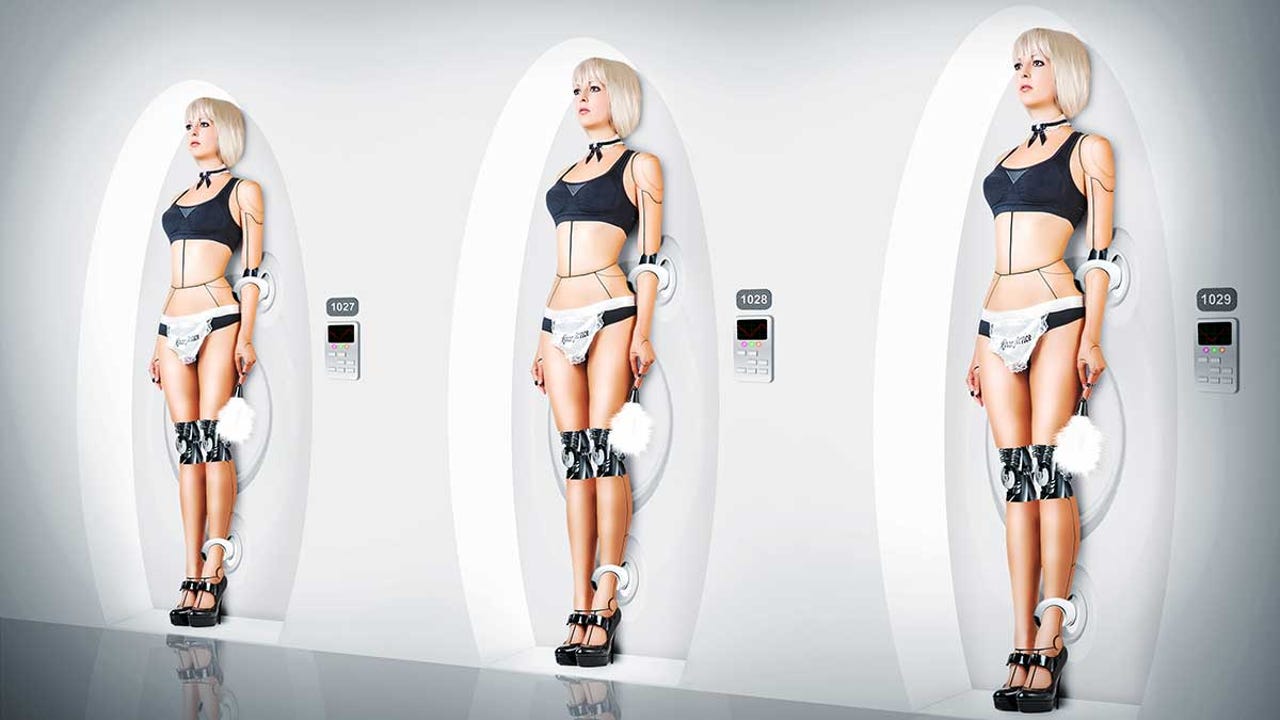7 game-changing robotics trends we saw in 2017


Sex robots
This year may well be remembered as the beginning of the end of healthy human relationships. The sex robot market is booming with the introduction of (and press frenzy around) robots like Synthea Amatus' Samantha and Harmony from Realbotix. Most of these adult gizmos have some limited interactivity, but to call them robots might be a stretch. By and large these sophisticated sex dolls are just that--passive lumps of silicon. It's a far cry from the intricate imaginings of Westworld's Dr. Anthony Ford.
Robots in healthcare
If you went to the hospital this year, you may have seen a robot named Tug. The automated cart totes supplies and drugs around semi-structured environments, like hospitals, speedily and securely delivering payloads to medical personnel. It's part of a broader trend of more robots in hospitals and surgical suites--a trend driven by labor shortages and a desire to reduce costly errors. One company to watch in this space is Auris Surgical Robotics, which has raised over half-a-billion dollars and is in late-stage development of surgical robots to target lung cancer.
Robots coming home
The reign of the Roomba as the king and sole inhabitant of consumer robot land may be drawing to a close. Jibo, a robotic personal assistant that's been highly anticipated, finally debuted late this year, potentially ushering in a new era of at-home robots. If you count drones, then 2017 was the year consumer robots became more than an abstract novelty. In fact, forty percent of robotics startups over the last year have targeted the consumer market, according to two recent reports from reputable research firms.
Automation reaches the little guys
Amazon figured out that automating its fulfillment warehouses would give it the ability to ship days quicker than competitors. Since 2012, when the e-retailer bought Kiva Systems, a warehouse automation company, Amazon has ruled the logistics game. But a host of companies like Fetch, Locus, and Otto are now bringing warehouse and factory automation to smaller players, selling or leasing turnkey robots that can be incorporated into existing facilities to work alongside humans. E-commerce is about to get a lot faster across the board.
Robots-as-a-Service
Sensor development and the rapid progression of the AI toolkit have created rapid iteration of robots of all kinds. That's made many enterprise customers loath to shell out big bucks for automation that might be quickly deemed obsolete. That's why robots-as-a-service has become a standard revenue model for companies like Avitas Systems, which makes drones for inspecting pipelines, and Locus Robotics, which makes autonomous, collaborative robots for warehouses. Hardware has long been king in robotics. But increasingly it's all about the service.
Robophobia reaches a new high
You can't talk about robots without ruffling feathers or inspiring talk about our impending demise. But this year the concern reached a fever pitch. It was spurred on in part by calls from big names in tech--Elon Musk, Stephen Hawking, Bill Gates--to regulate development of AI, particularly where weapons systems are concerned. But the fears also extend to the economy and the jobs that have been or will be lost to automation. One Pew poll this year found that 70 percent of adults in the US fear that robots will negatively impact society.
Compliments to the robot chef
From pizza made to order to the perfectly-flipped burger, food prep robots made waves in 2017 and will transform fast food in years ahead. Flippy, the burger-making robot, got its first gig at Caliburger this year, and Zume, a high tech pizza company, just got $48 million in funding to deliver piping hot pies that human hands never touch. Rising labor costs and high turnover are driving innovation in food prep automation.